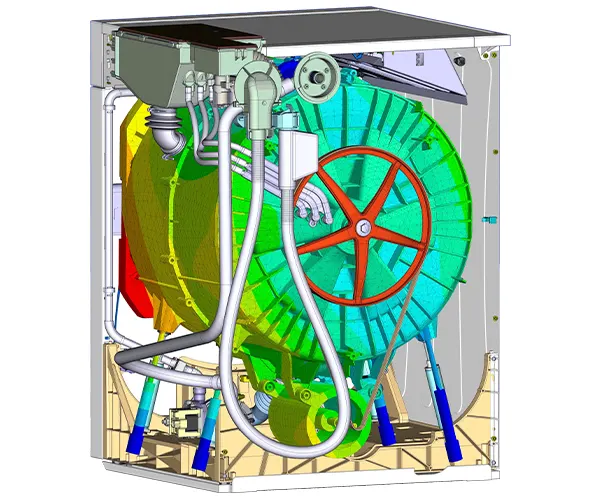Introduction

In the world of household appliances, efficiency and performance are key considerations for both manufacturers and consumers. Computational Fluid Dynamics (CFD) analysis is a powerful tool used by engineers to enhance the design and functionality of washing machines. In this article, we will delve into the application of CFD analysis in optimizing the performance of washing machines, ensuring they clean clothes effectively while conserving water and energy.
Understanding CFD Analysis
Computational Fluid Dynamics (CFD) is a simulation technique used to study the behavior of fluids and gases within a specified environment. In the context of washing machines, CFD analysis involves creating a virtual model of the machine and simulating the flow of water, detergent, and clothes during the washing process. This allows engineers to identify areas of inefficiency and make design adjustments for optimal performance.
Benefits of CFD Analysis for Washing Machines
Optimized Drum Design: CFD analysis enables engineers to visualize and analyze the flow patterns of water and clothes inside the drum. This insight helps in designing drum features that facilitate effective agitation and cleaning.
Efficient Water Usage: By simulating water flow, engineers can identify ways to minimize water consumption while ensuring thorough cleaning. This leads to more environmentally-friendly and cost-effective washing machines.
Detergent Dispersion: CFD analysis allows for the study of detergent distribution throughout the wash cycle, ensuring that it is evenly dispersed for effective cleaning.
Reduced Energy Consumption: Through optimized design, CFD analysis can identify ways to reduce the energy required to heat water, leading to more energy-efficient washing machines.
Noise and Vibration Reduction: Properly designed drum features and balance can lead to reduced noise and vibration levels during operation, resulting in a quieter and more stable machine.
Steps in Conducting CFD Analysis for Washing Machines
Model Creation: Engineers create a detailed 3D model of the washing machine, including components like the drum, water inlet, agitator, and detergent dispenser.
Boundary Conditions: Parameters such as water temperature, detergent concentration, and initial clothing placement are defined. These conditions simulate the actual washing process.
Meshing: The 3D model is divided into smaller elements (mesh) to facilitate numerical calculations. This step is crucial for accurate simulation results.
Simulation and Analysis: The CFD software performs simulations based on the defined parameters. Engineers analyze the results to identify areas of improvement.
Iterative Process: Design modifications are made based on the analysis, and the CFD simulation is run again. This process is repeated until the desired level of optimization is achieved.
Conclusion
CFD analysis is a powerful tool in the pursuit of efficient and environmentally-friendly washing machines. By simulating the flow of water, detergent, and clothes, engineers can make informed design decisions that lead to improved cleaning performance, reduced water and energy consumption, and quieter operation. Manufacturers and consumers alike benefit from this approach, as it results in washing machines that are not only more effective but also more sustainable in the long run. Embracing CFD analysis in the design process is a significant step towards creating a more efficient and eco-conscious home appliance.
